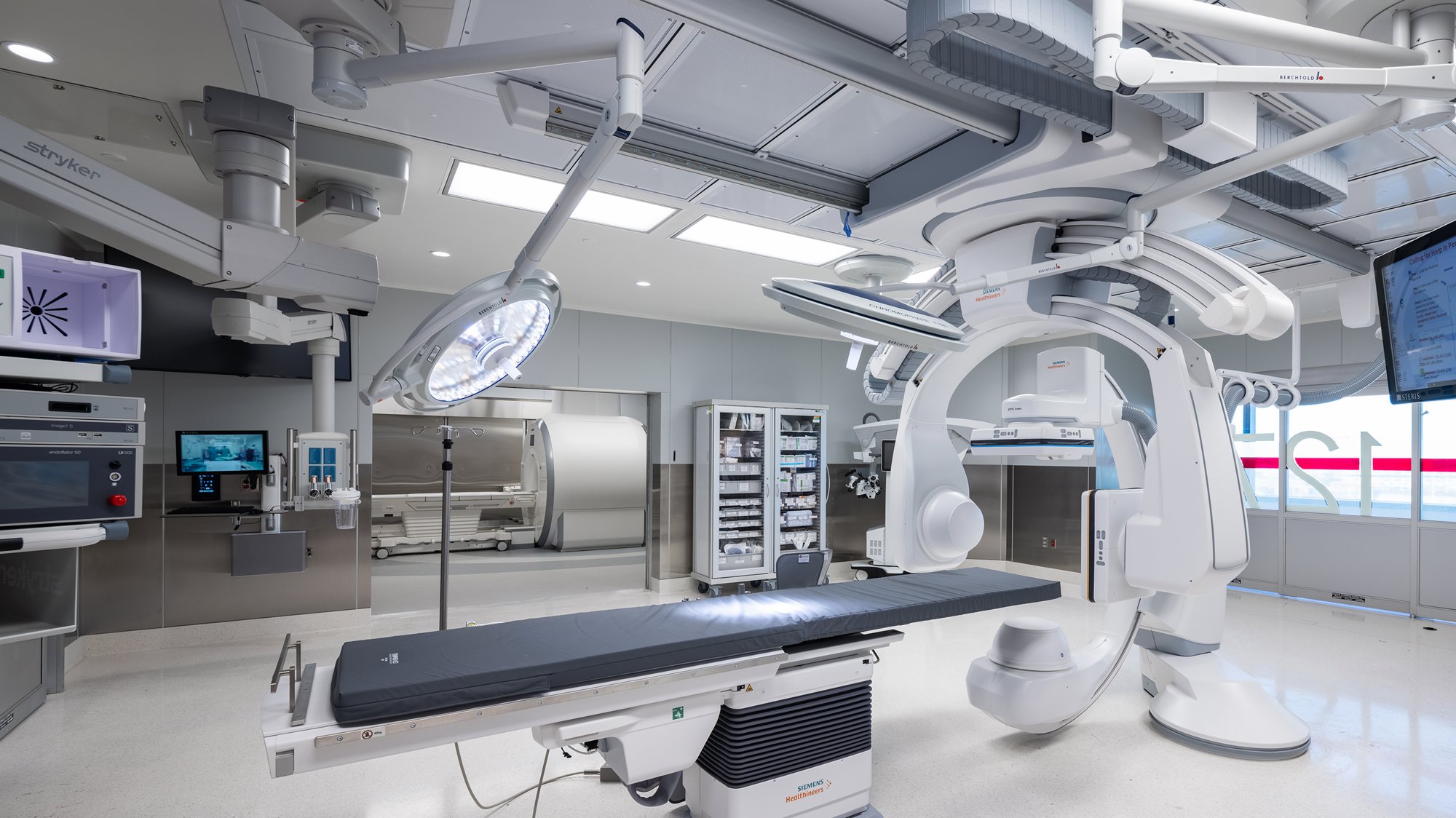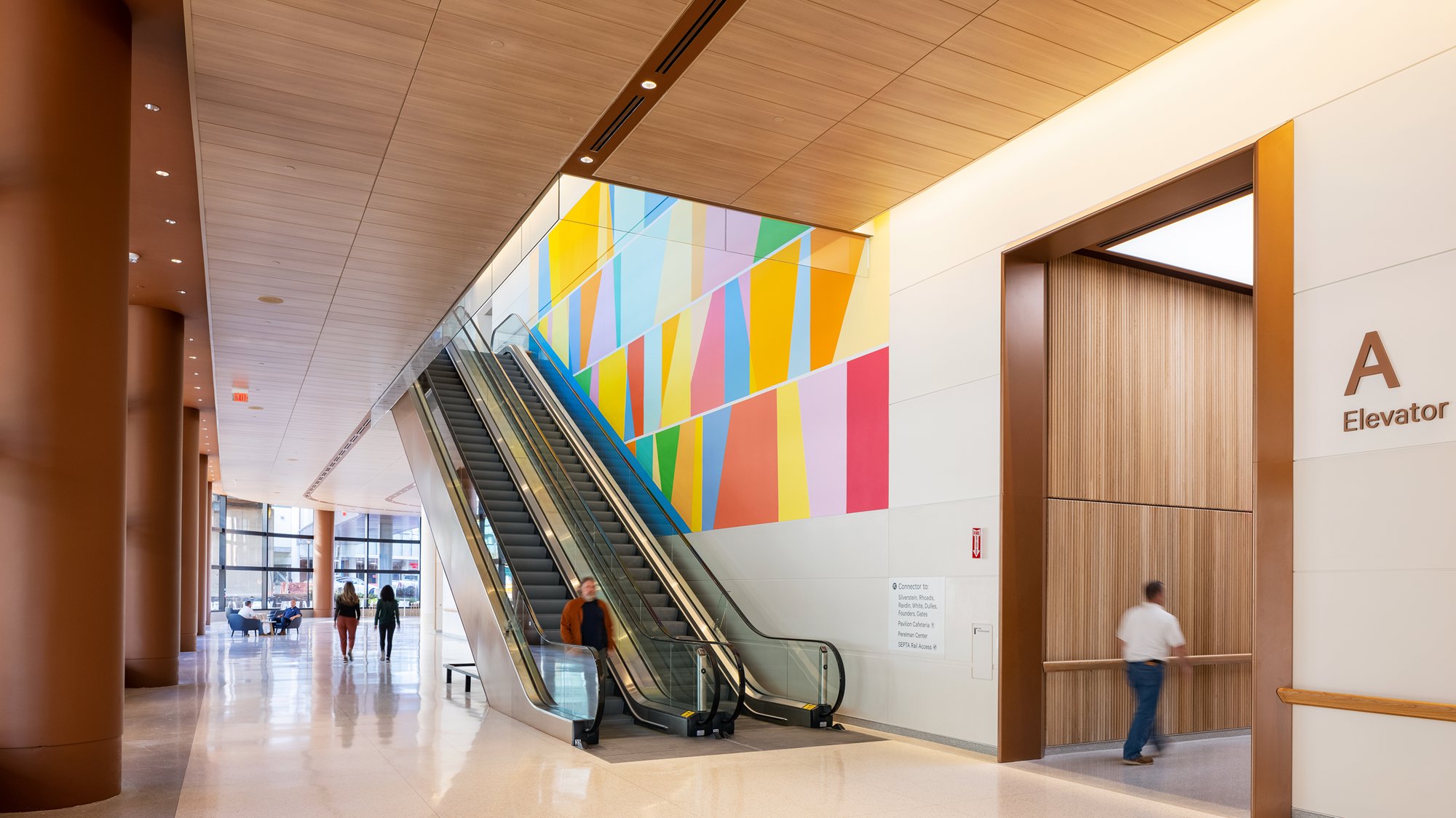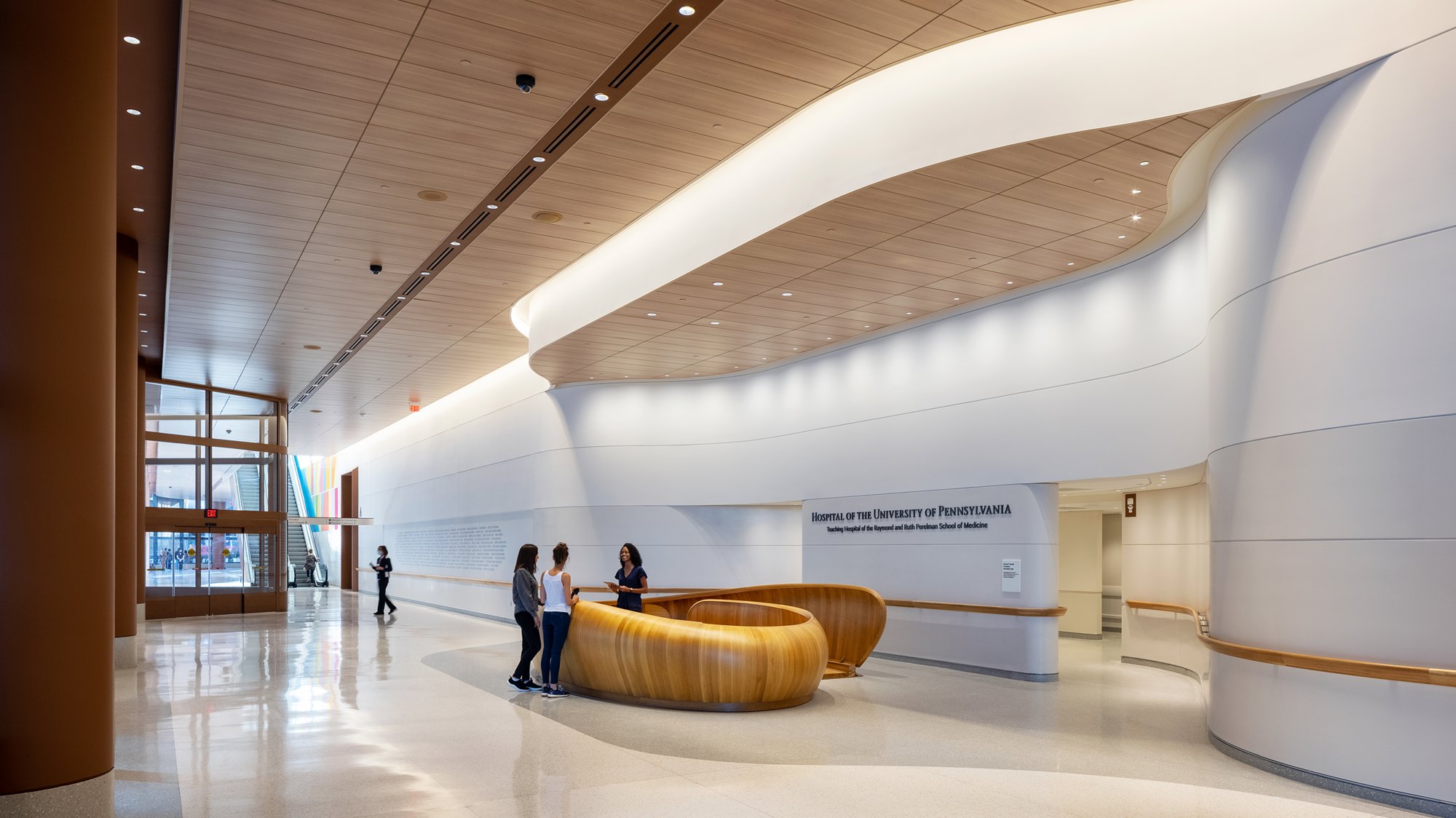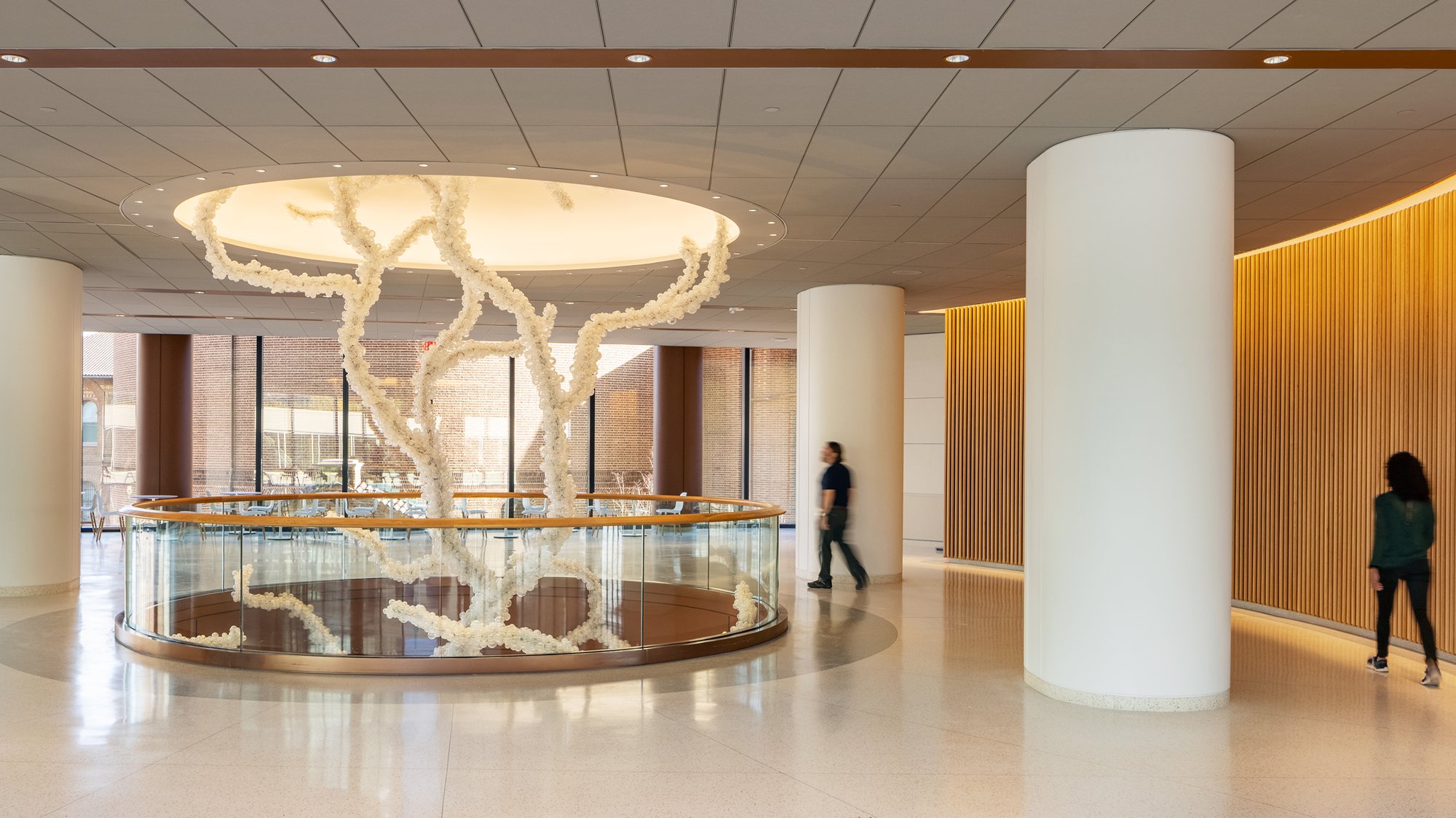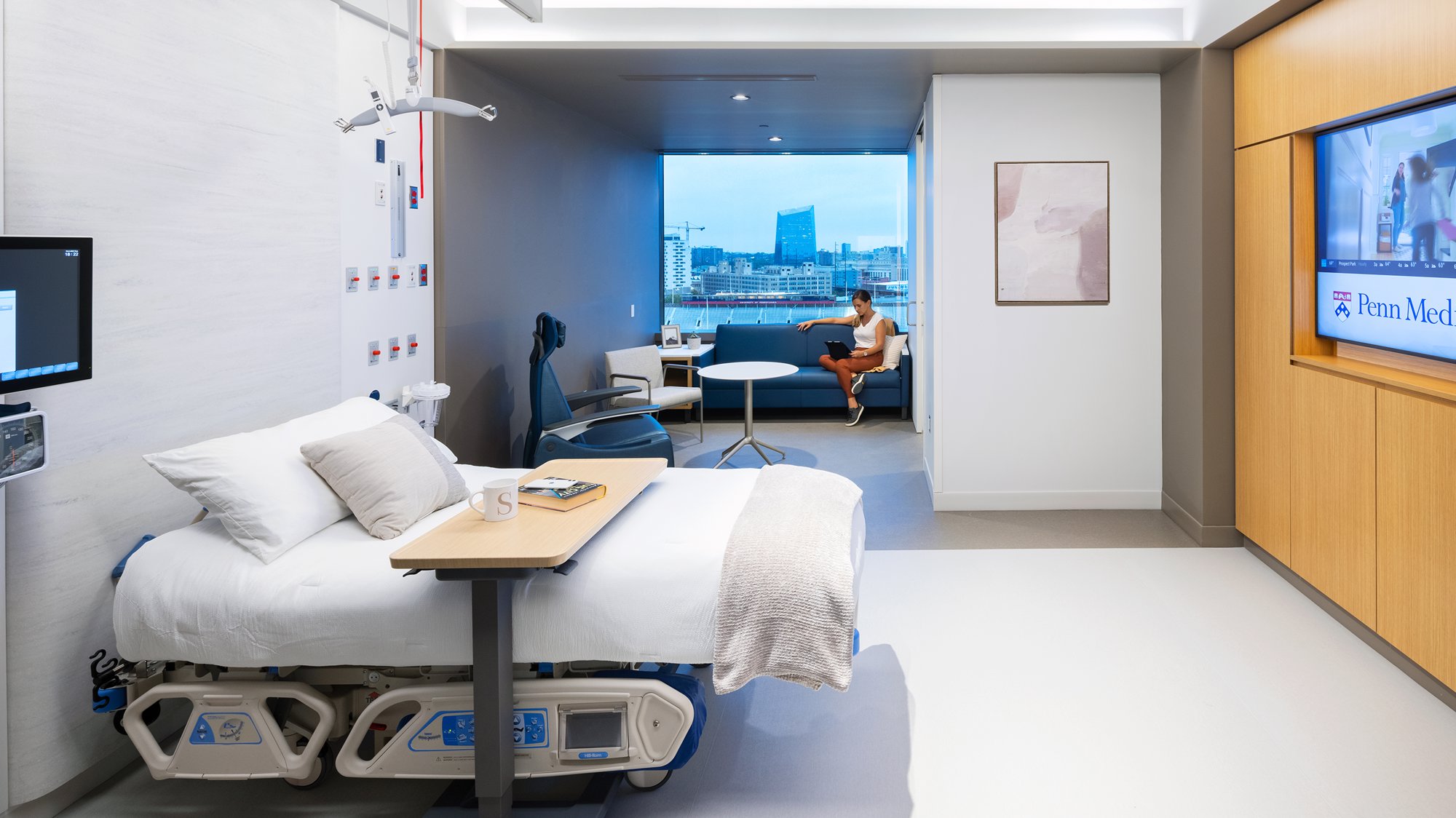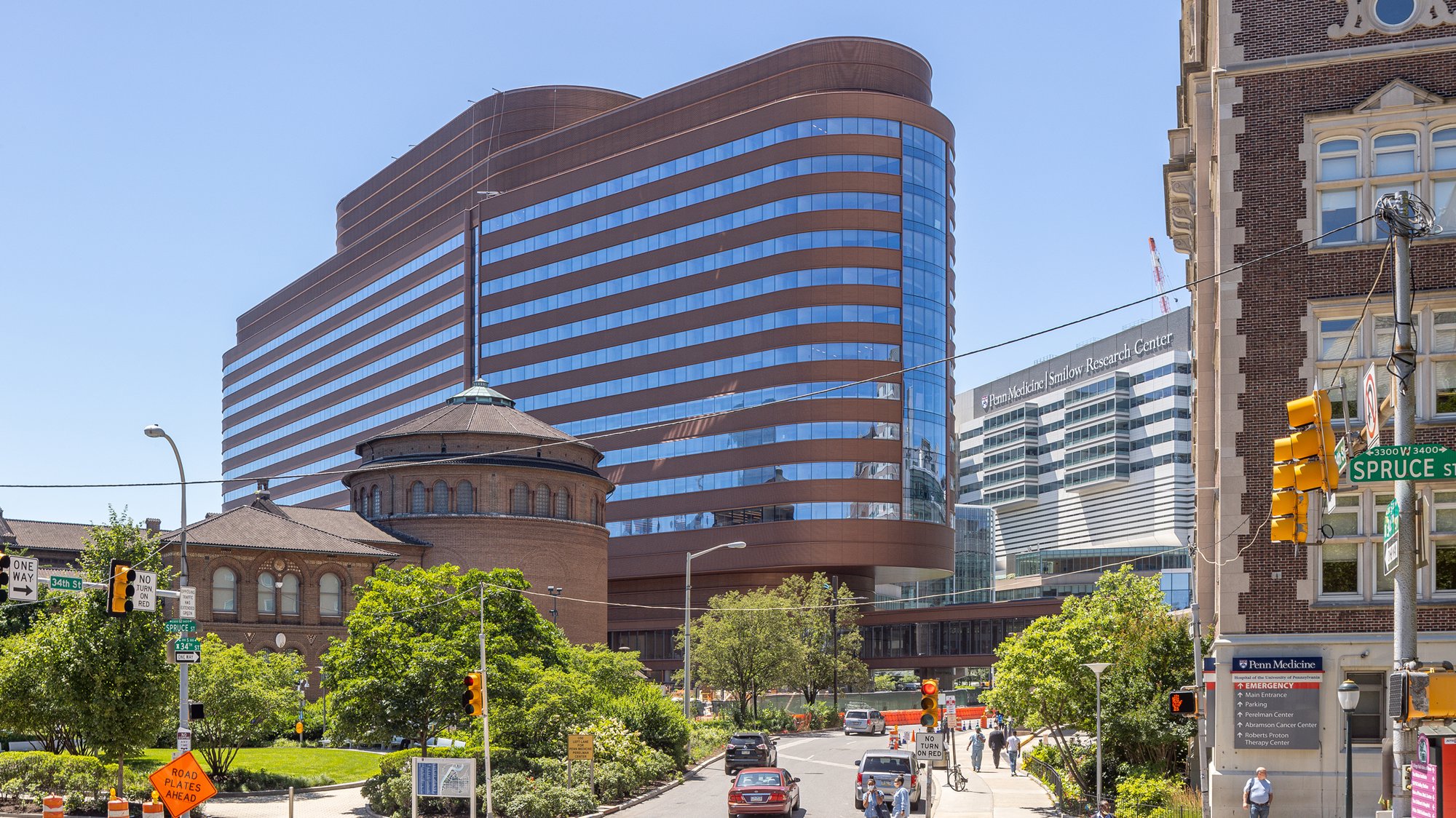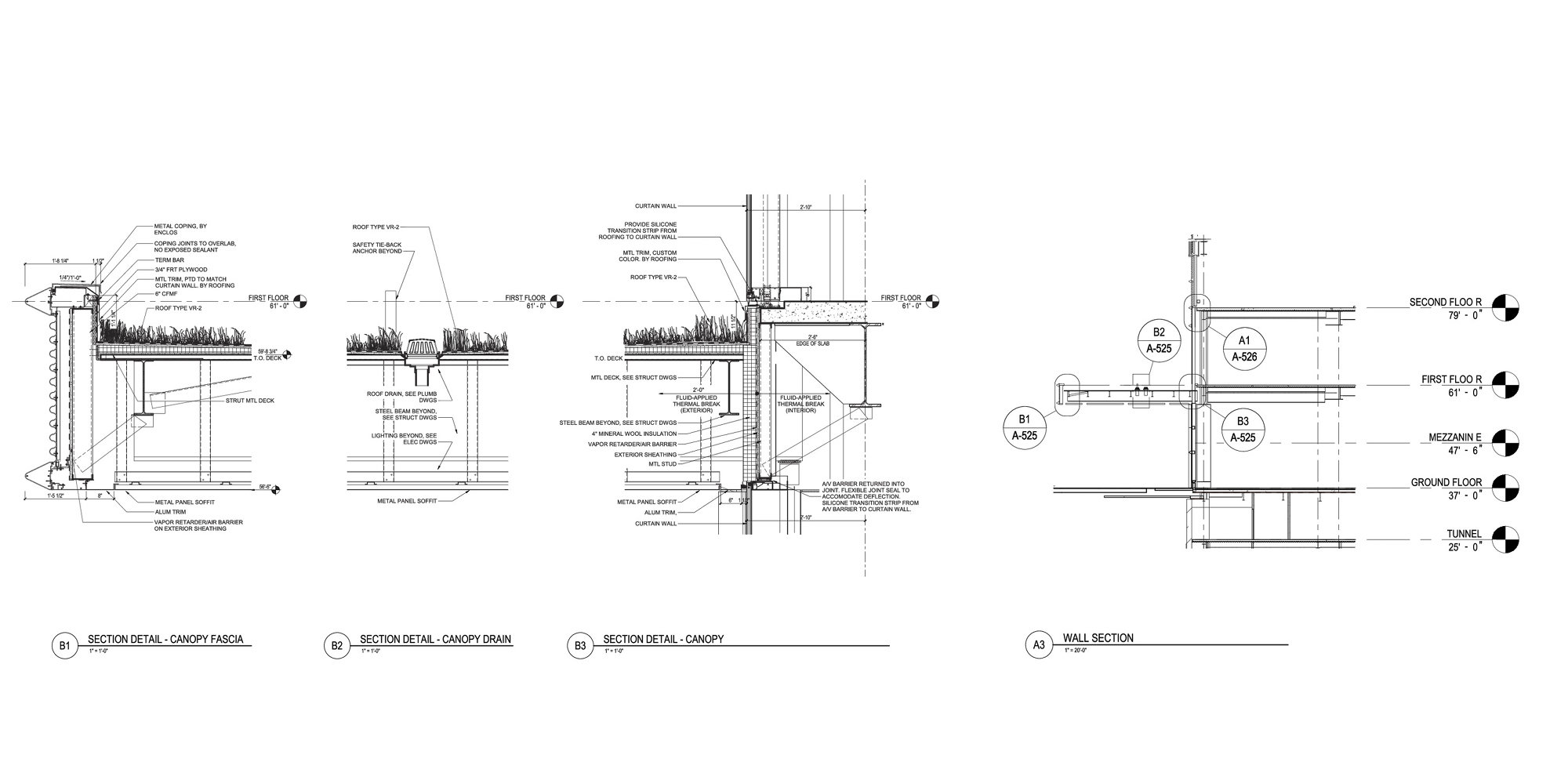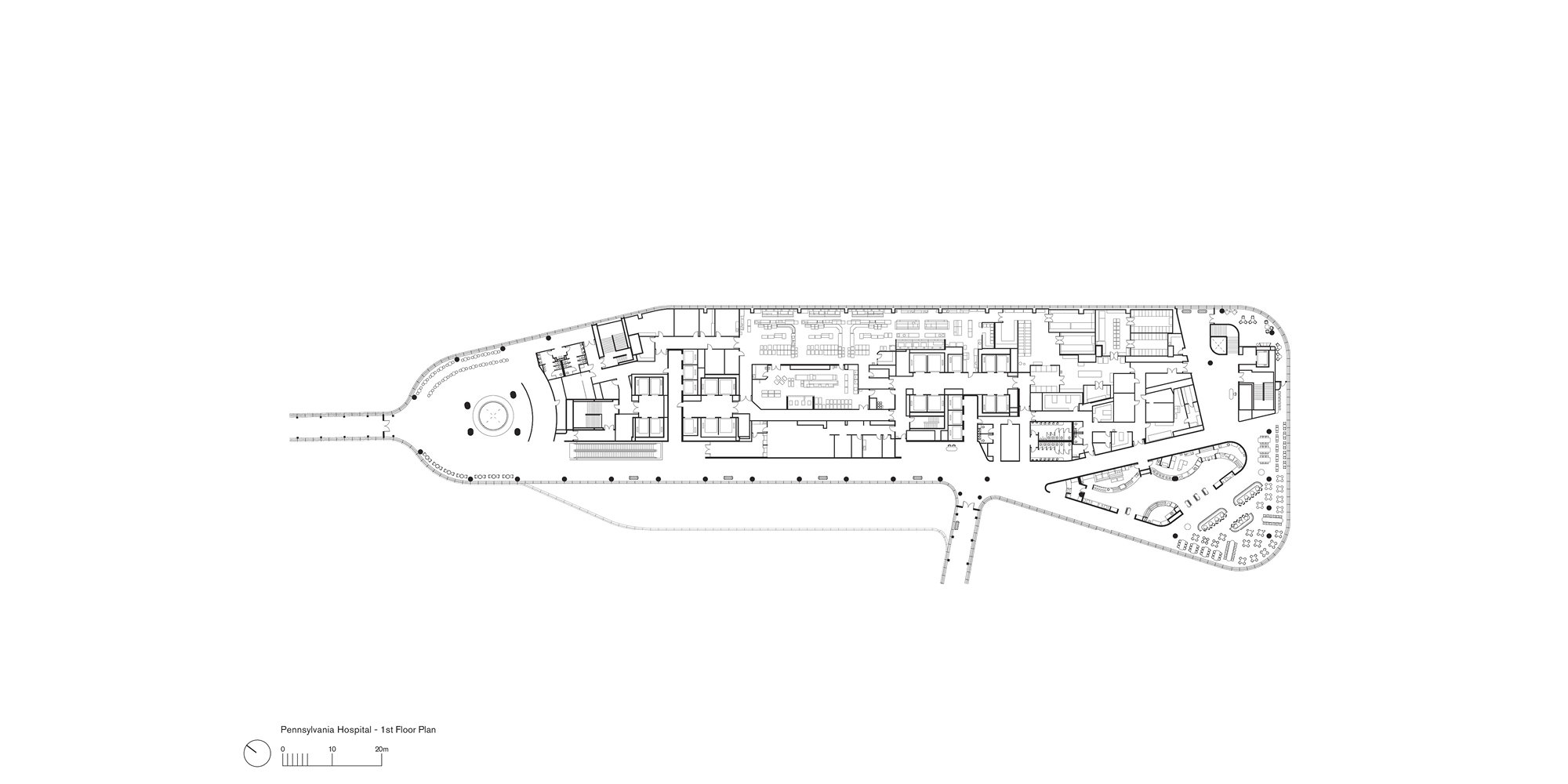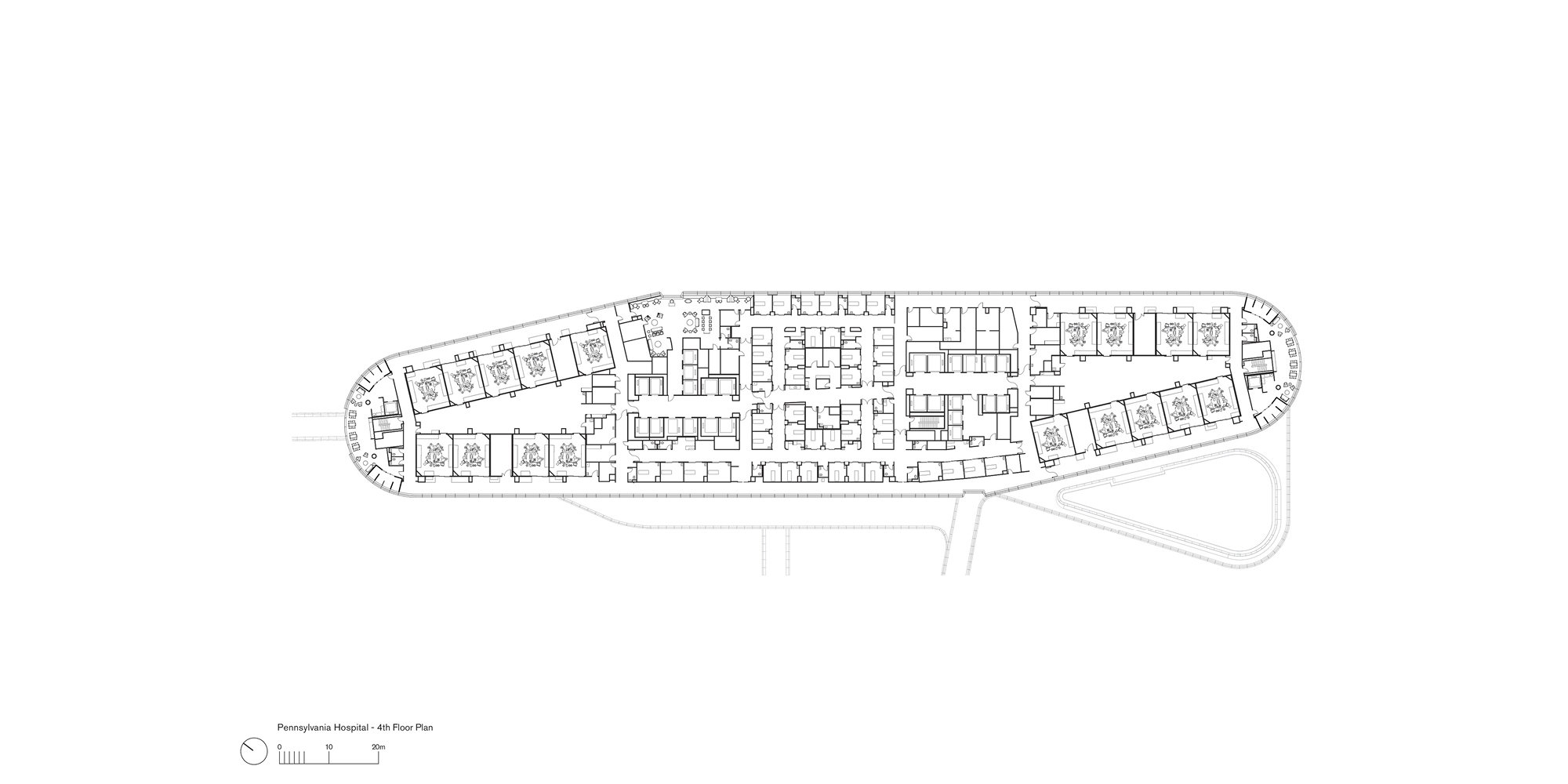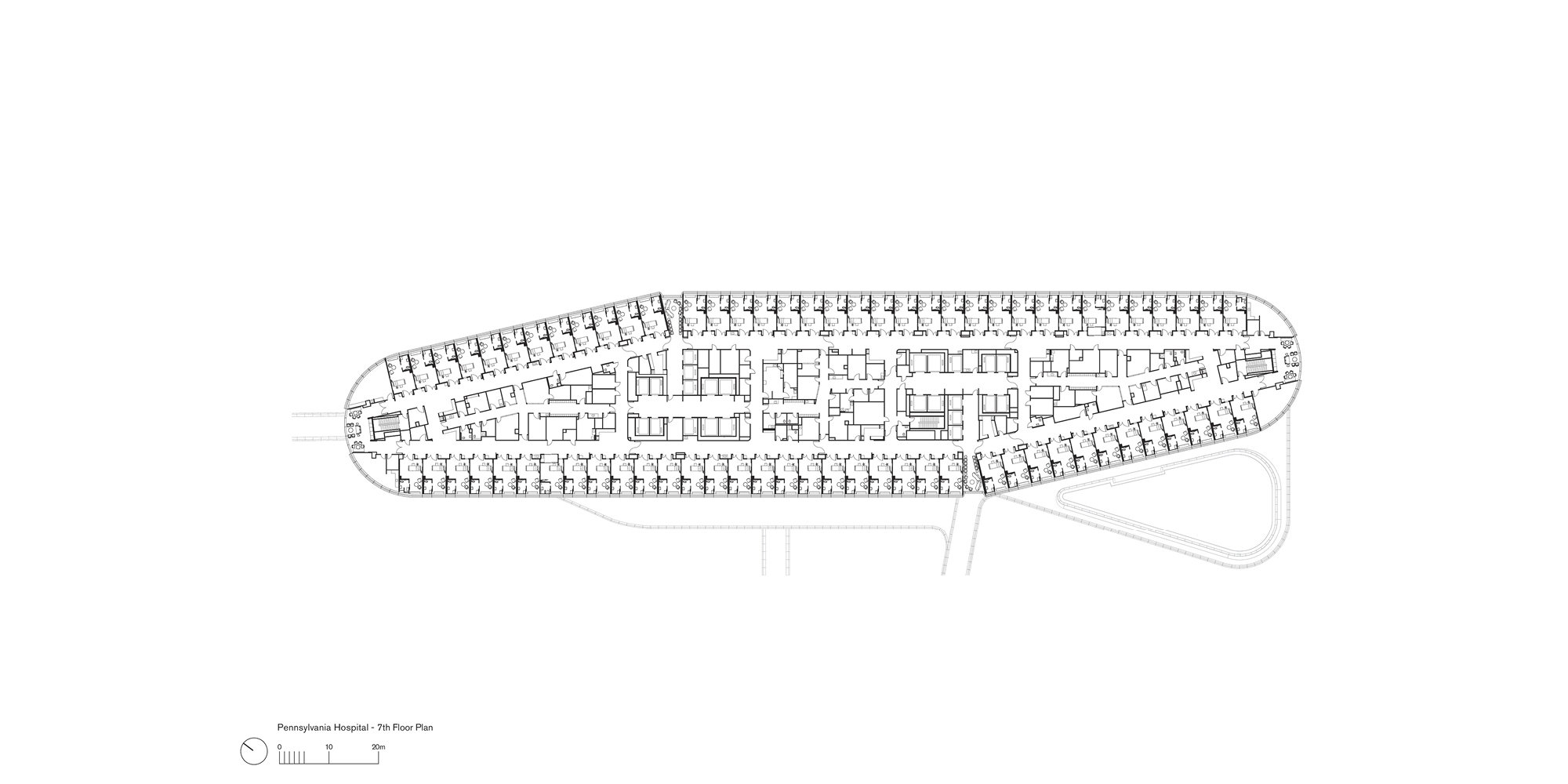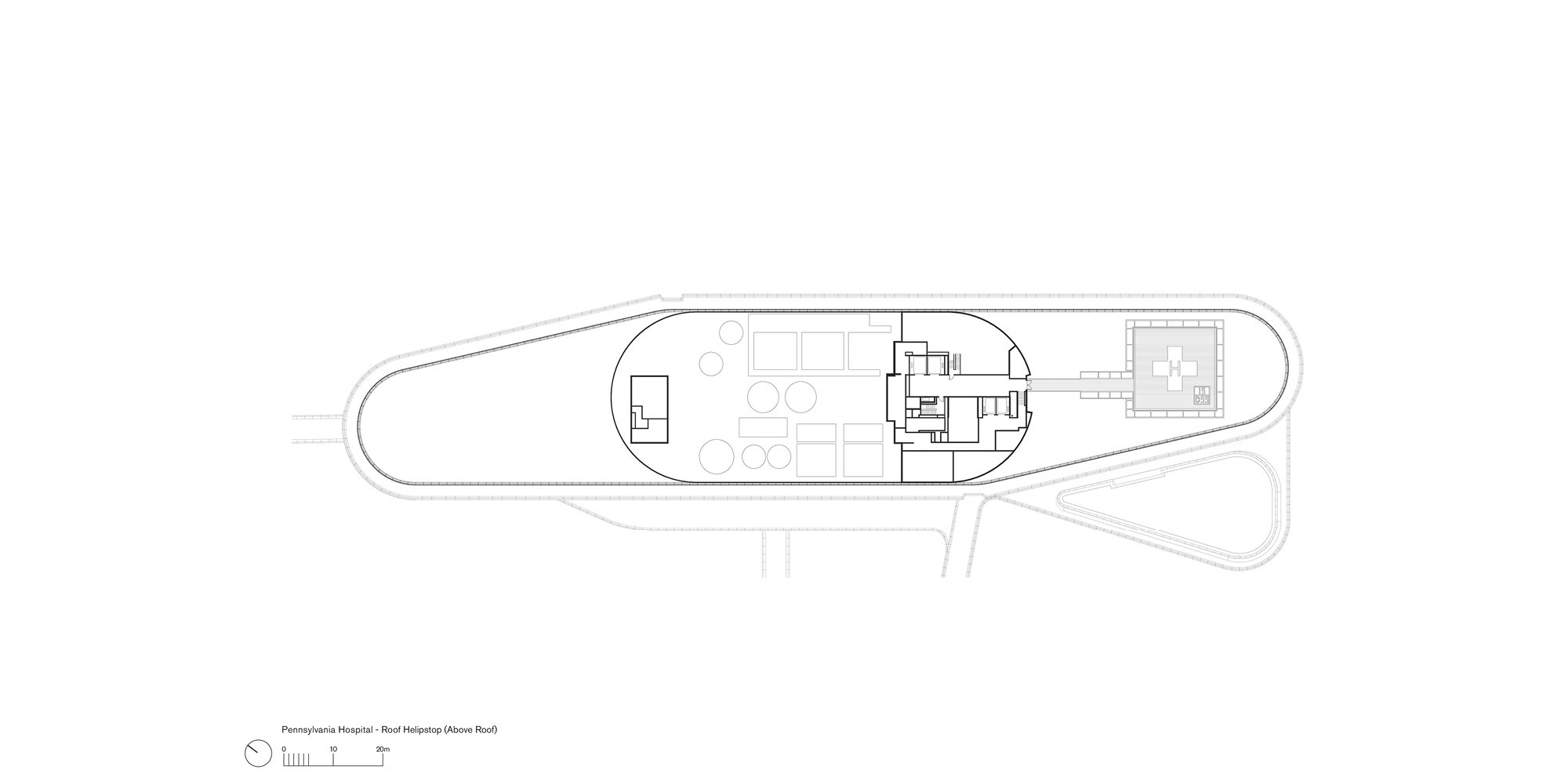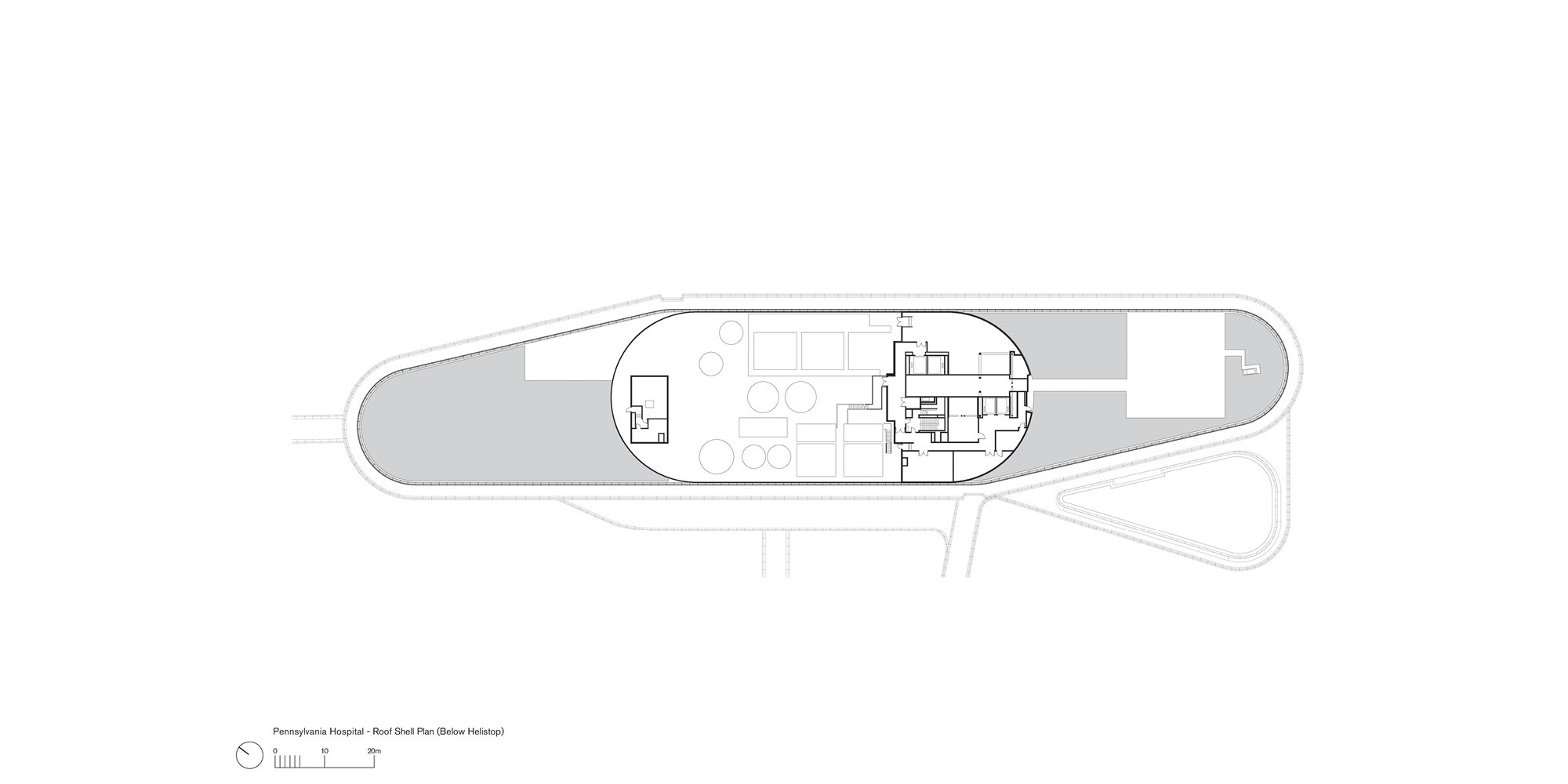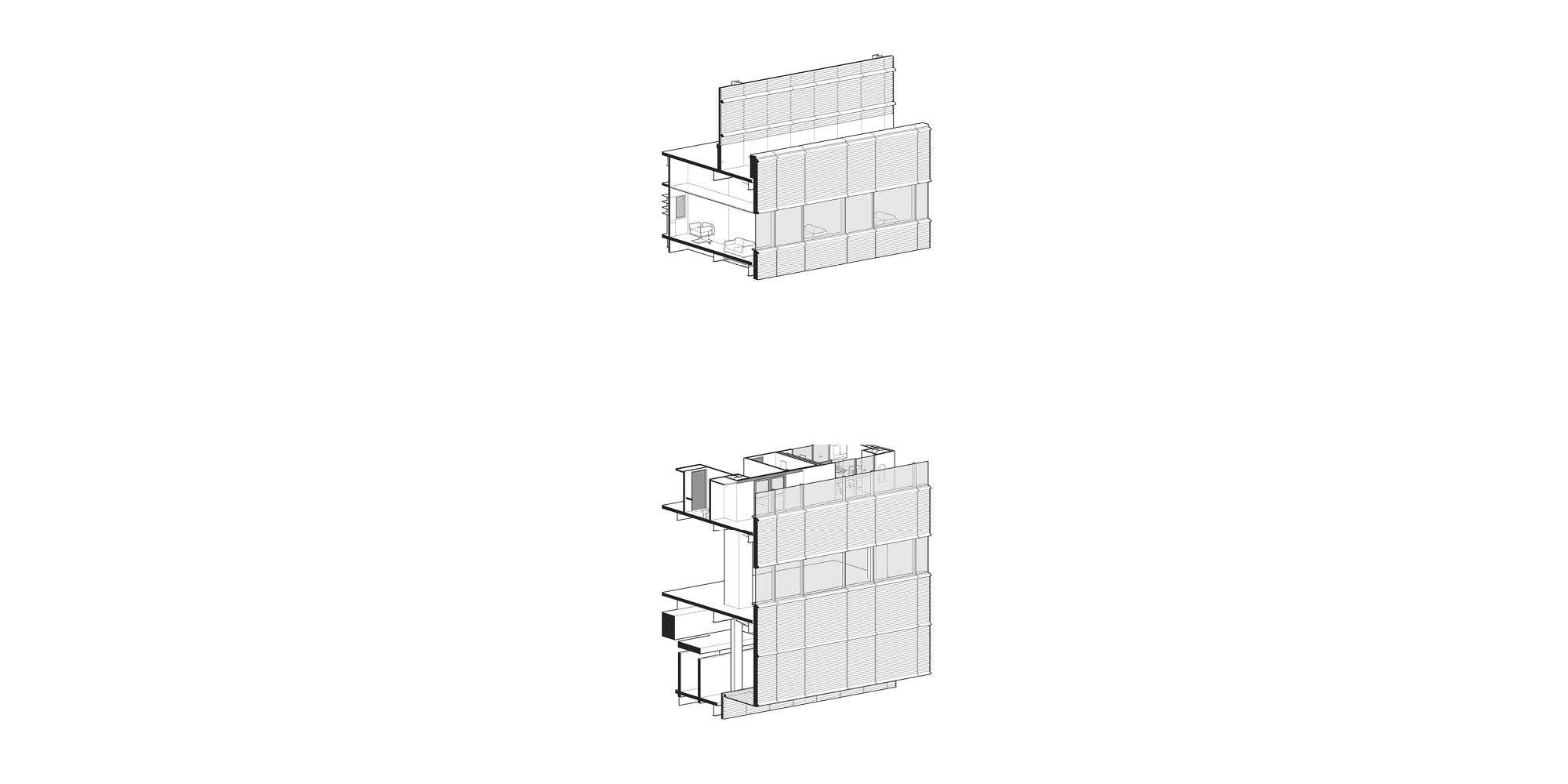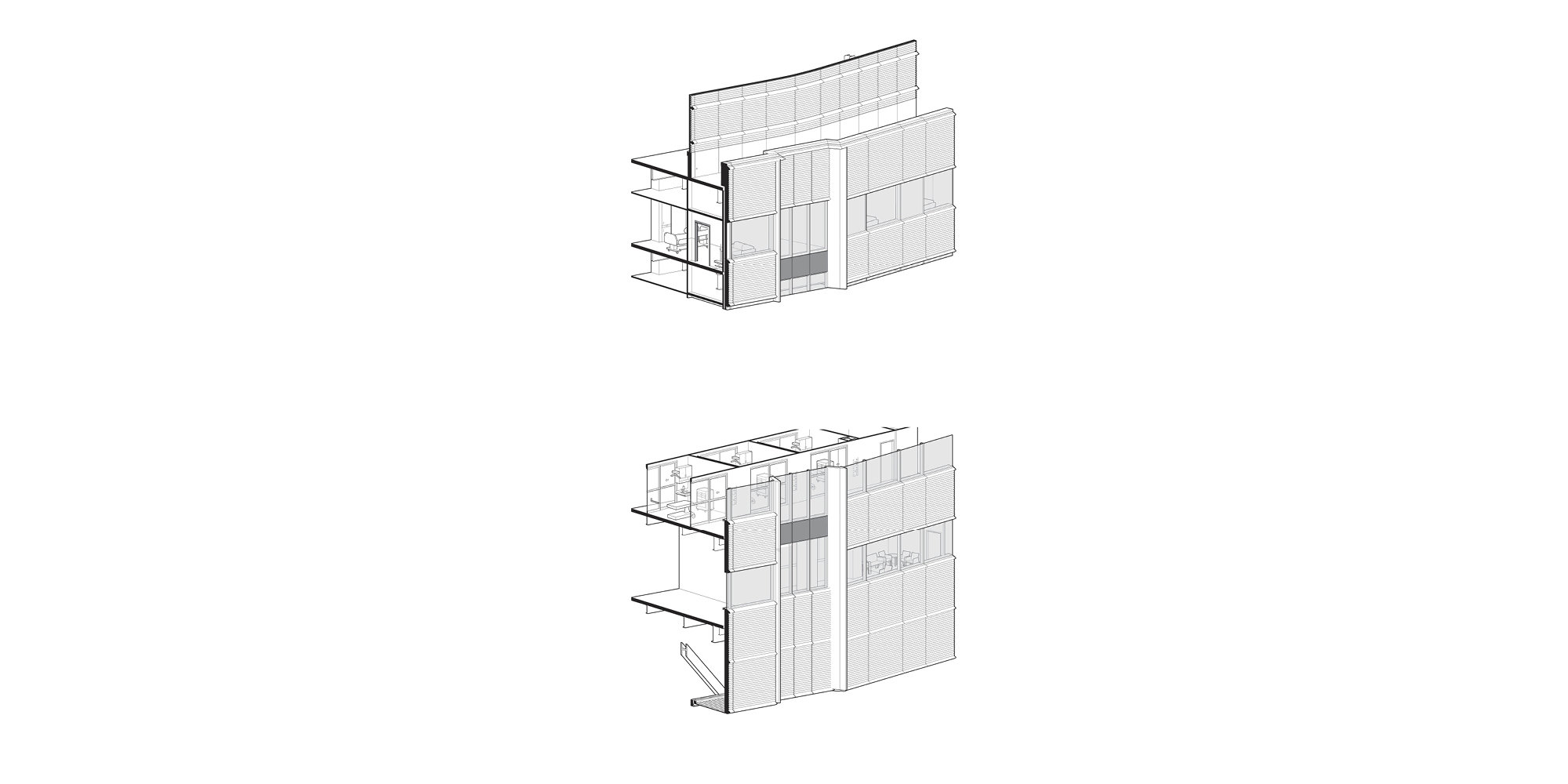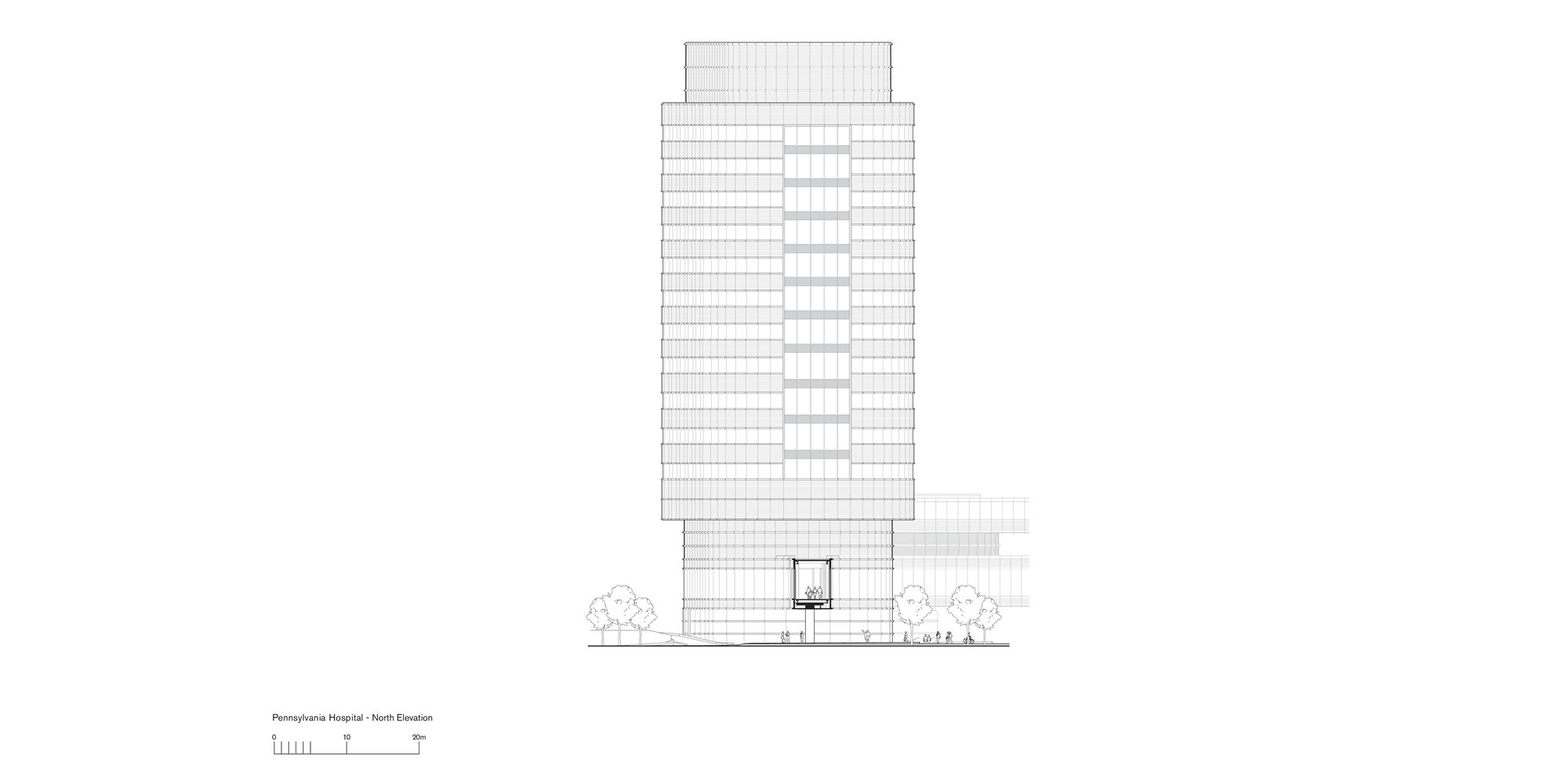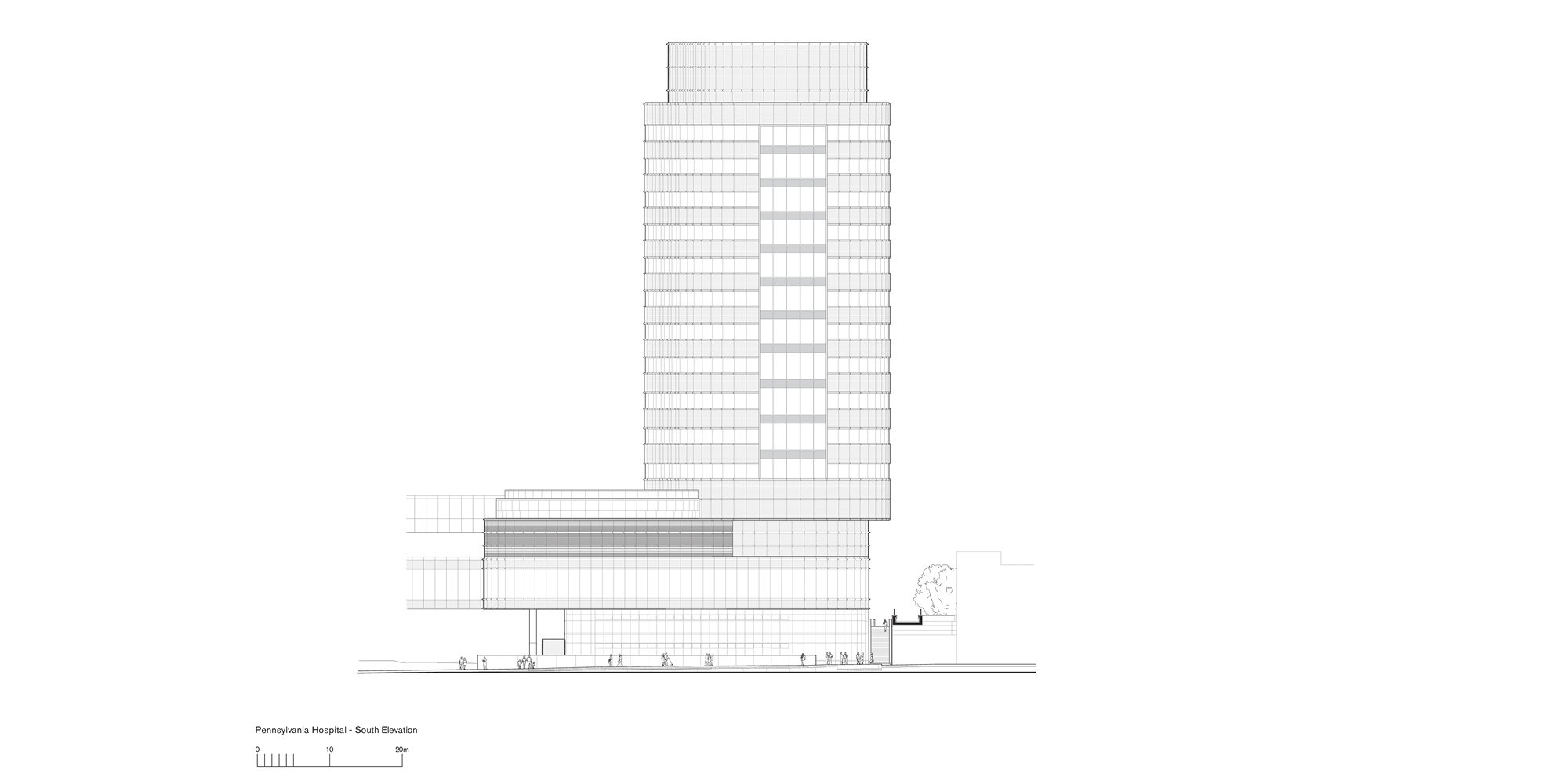View the 360 tour
The Pavilion for the University of Pennsylvania Health System (Penn Medicine) is a flexible inpatient facility that serves as a new institutional and architectural icon for Penn Medicine on its extensive campus in West Philadelphia. Co-located within the same complex with some of the world’s most advanced research laboratories and specialized imaging facilities, the design places the patient at the center and enables collaboration in research. The new building serves as a blueprint for the ‘hospital of the future’, with a focus on patient experience and comfort, providing the most cutting-edge medical care in the world.
The design of the building is sustainable, efficient, uplifting and sensitive to its surroundings, responding to the needs of people – material and spiritual, measurable and intangible. With this approach, the patient comes first. Their experience starts with a reassuring welcome in the lobby, and extends through comfortable wards and uplifting spaces, such as the soaring cafe and surrounding gardens. By prioritising light and views for the patients, visitors and staff, the design takes a holistic view towards the wellbeing of the people inside. The unique, flexible planning system for the units breaks the building down into ‘neighborhoods’ which signify a smaller, more human scale, providing a feeling of a more sensitive and personalised environment. Each floor features a family ‘living room’ for people accompanying the patient, and the size and configuration of the bed units is also flexible to be more reactive to changing needs and patient demands.
Flexibility is also a key consideration; often the most unpleasant experiences for a patient are when they are constantly wheeled in and out of different rooms to accommodate the changing level of medical care they require. The 500 acuity adaptable private patient rooms have been designed to support varying types of patient care – from Intensive Care Units to basic in-patient facilities, and are spacious enough for family to stay with the patient. They also feature an interactive wall that allows the patient to customise their own environment, while also working as a real-time information and teaching aid for doctors. As medical science evolves, patient priorities will continue to change and new technologies will need to be incorporated – many of which we cannot yet predict. In this way the building provides a platform for the future delivery of medicine.
Equally important is the way in which the new building is integrated with its setting. Continuing Philadelphia’s wonderful civic tradition, the design creates a new public square, a focus for all of the surrounding buildings, which will anchor Penn Medicine and create new connections between the hospital and university campus. The form of the building is very much of its place and in keeping with the architecture of the campus – its curve references the Rotunda of the Penn Museum. Furthermore, a new, more defined route from the train station to this new public square gives arriving visitors an overview of the whole Penn Hospital campus, making orientation simple and intuitive. The new addition also draws a strand of greenery into the site to connect the river and city with a physic garden – a landscape that celebrates edible, beautiful and medicinal plants.










